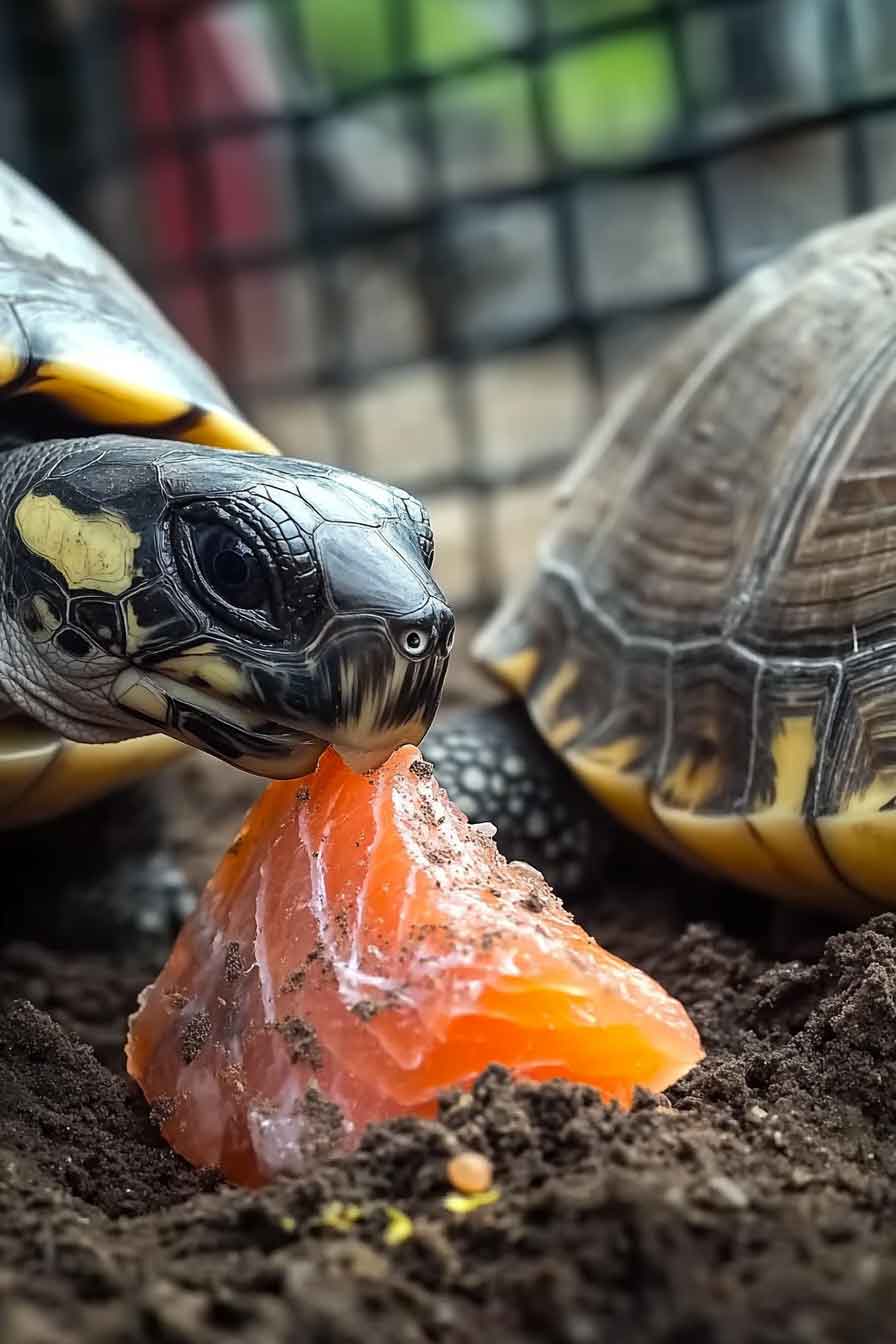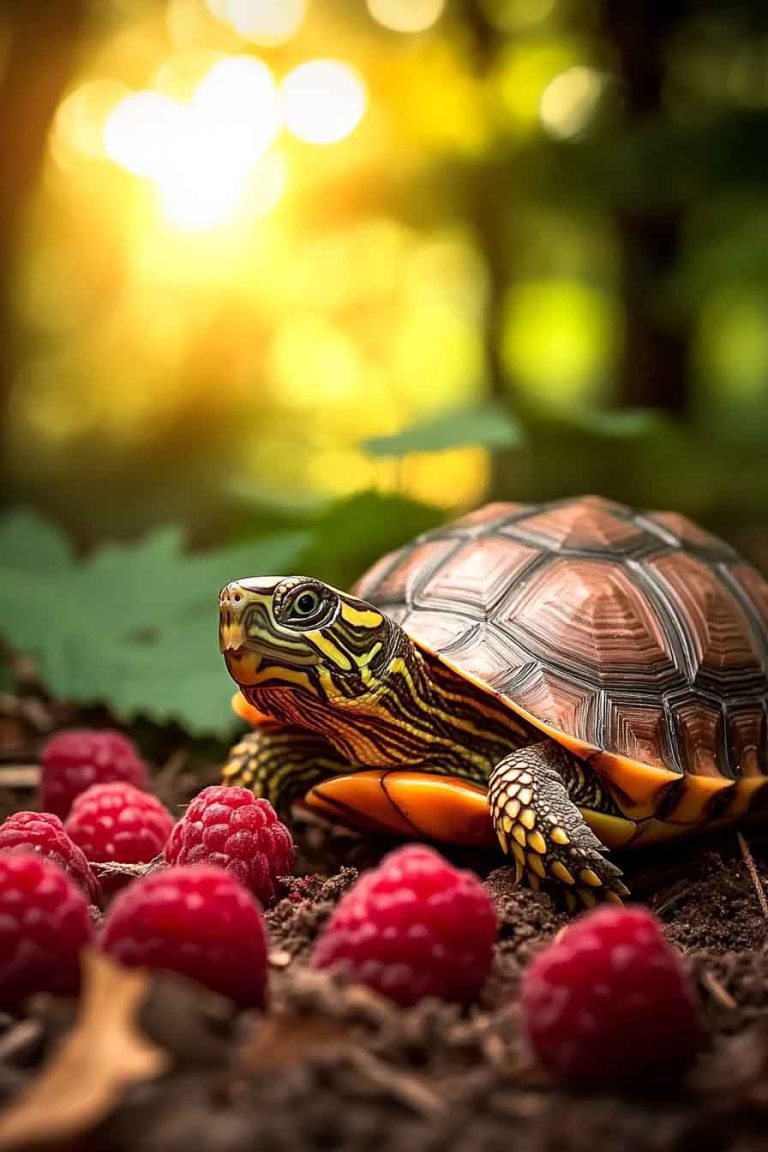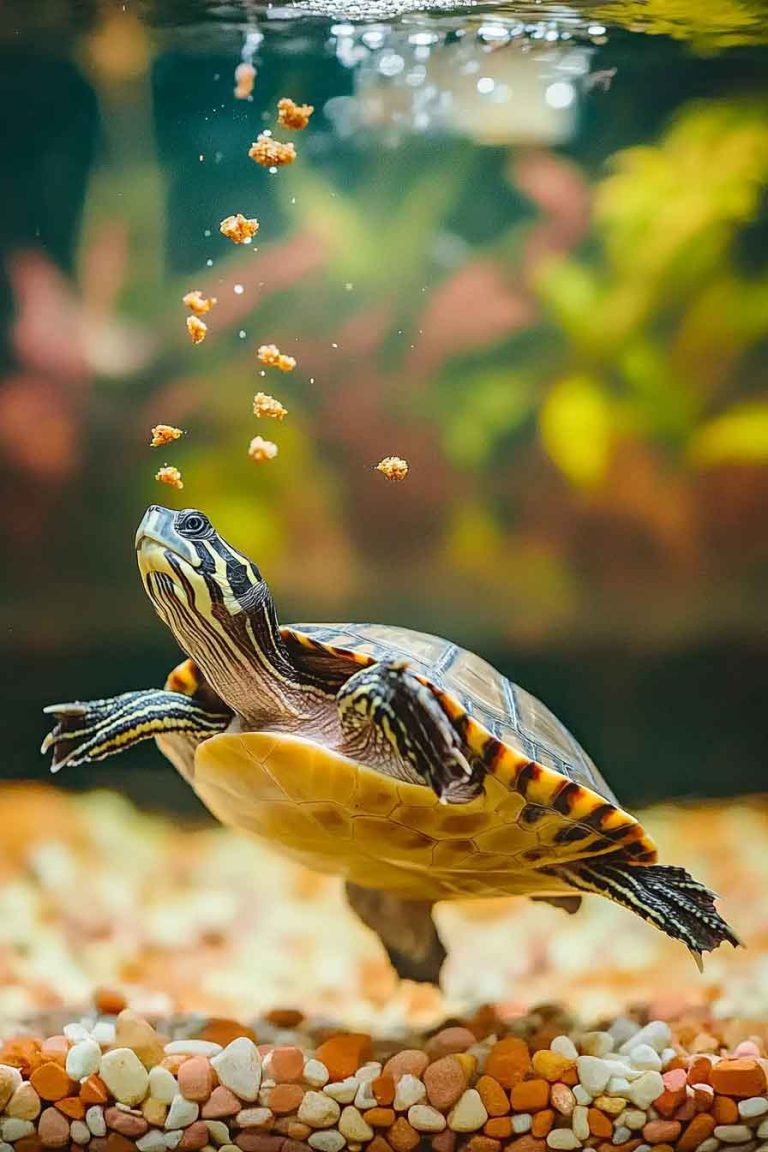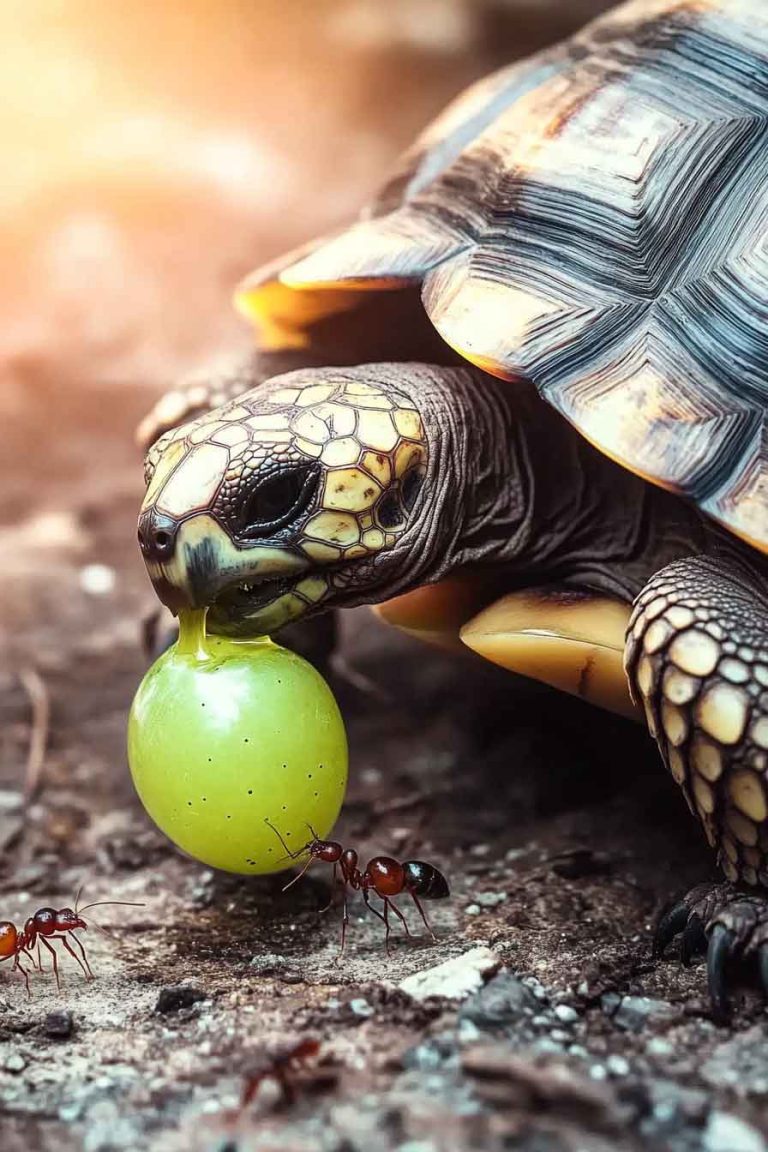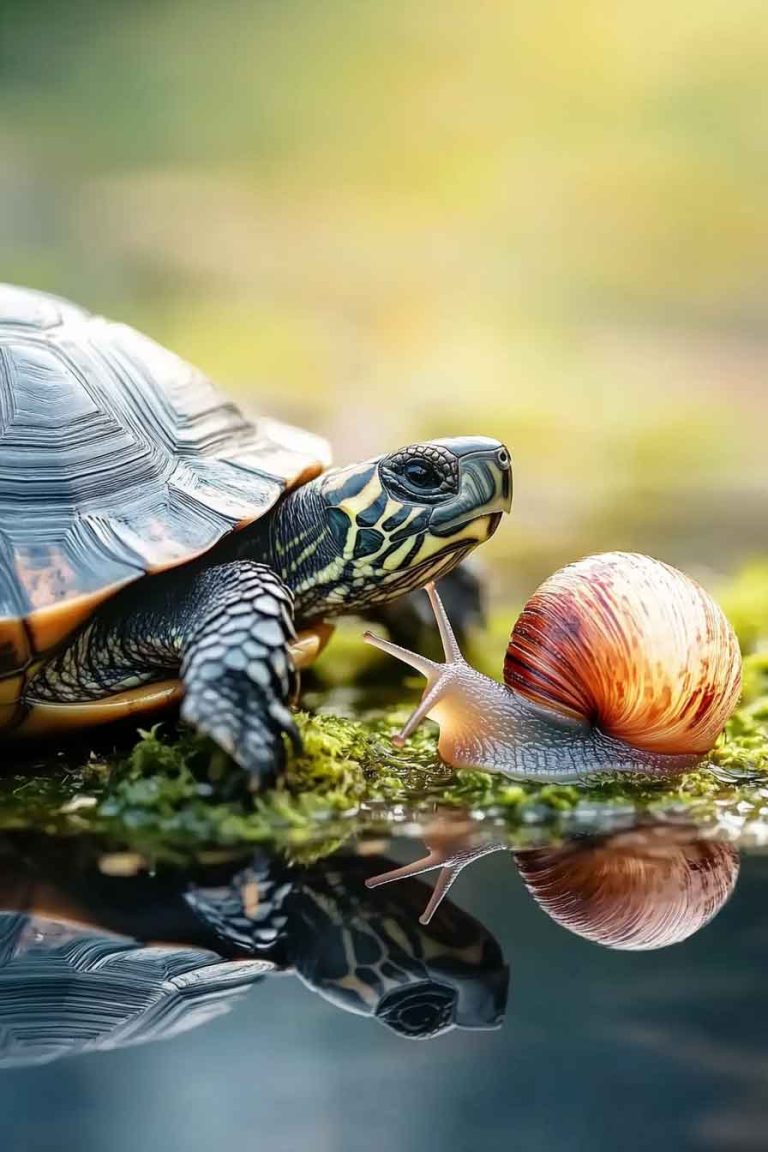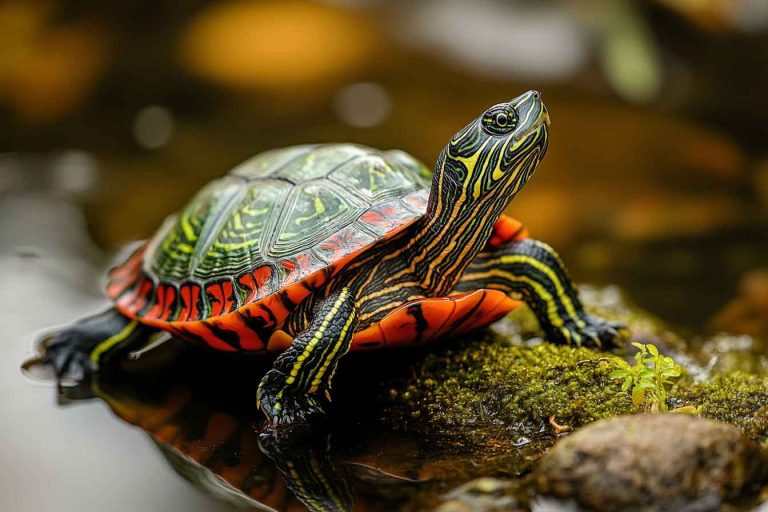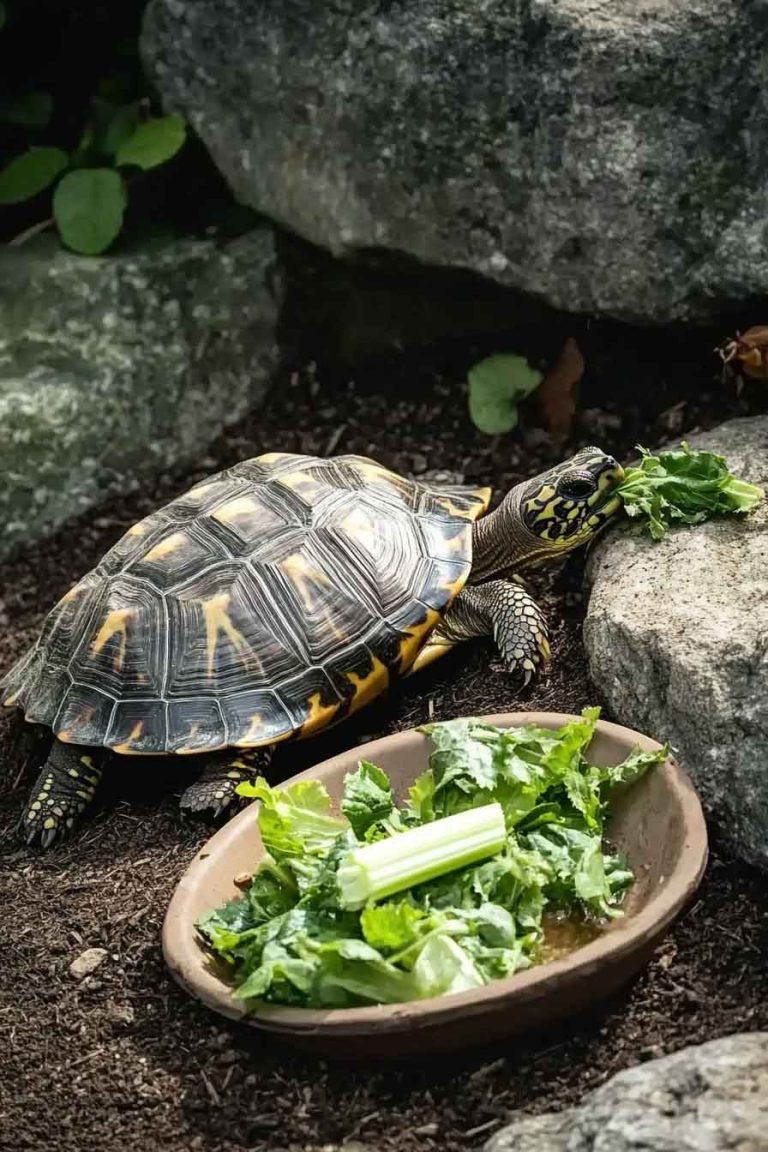Can Turtles Eat Salmon? Safe Feeding Tips for Pet Turtles
As a turtle owner, I know how tempting it can be to share your delicious meals with your shelled companion. When I’m enjoying a nice piece of salmon, I often wonder if my turtle might enjoy it too. After all, many turtles are omnivores and do eat fish in the wild, right? So, can turtles…
As a turtle owner, I know how tempting it can be to share your delicious meals with your shelled companion. When I’m enjoying a nice piece of salmon, I often wonder if my turtle might enjoy it too. After all, many turtles are omnivores and do eat fish in the wild, right?
So, can turtles eat salmon? The answer is yes, but with important considerations. Turtles can eat salmon occasionally as a protein source, but it should be given in moderation and prepared properly. Fresh, cooked salmon without seasoning can be a healthy treat for most turtle species. However, raw salmon, seasoned salmon, or feeding it too frequently can pose health risks to your turtle.
In this article, I’m going to walk you through everything you need to know about feeding salmon to your turtle. I’ll cover the benefits, risks, proper preparation methods, and how much is safe to give. Keep reading if you want to make informed decisions about your turtle’s diet.
Can You Feed Salmon To Your Pet Turtle?
The short answer is yes, but let me explain the details. Since salmon is a protein-rich fish, many people assume it’s automatically good for turtles. While this isn’t entirely wrong, there are several factors I need to consider before adding salmon to my turtle’s menu.
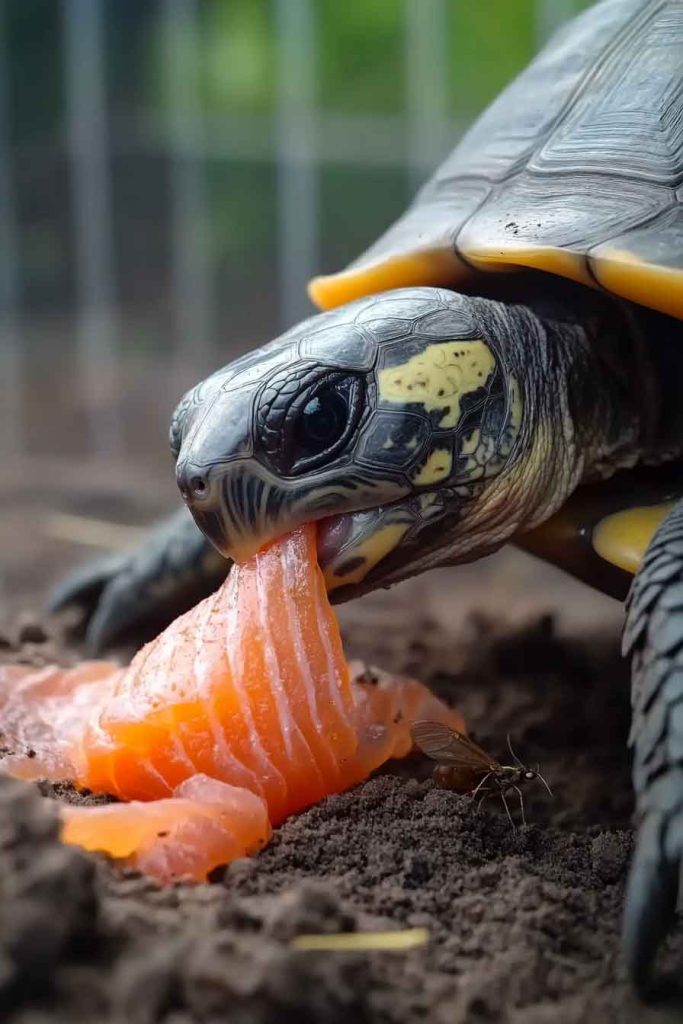
Turtles, depending on their species, have varying dietary needs. Omnivorous turtles like red-eared sliders can benefit from fish protein, while strictly herbivorous species should avoid it altogether. Let me break down the nutritional content of 100 grams of cooked salmon:
Nutritional Content of Salmon (100g):
- Protein: 25.4 g
- Fat: 12.4 g
- Omega-3 fatty acids: 2.3 g
- Calcium: 12 mg
- Phosphorus: 252 mg
- Vitamin D: 11.0 mcg
- Vitamin B12: 3.2 mcg
- Selenium: 22.5 mcg
- Potassium: 363 mg
- Sodium: 59 mg
Looking at this nutritional profile, I can see both benefits and concerns. The high protein content is excellent for growing turtles and those that need protein in their diet. However, the calcium-to-phosphorus ratio is concerning – salmon has a 1:21 ratio, which is far from the ideal 2:1 ratio turtles need.
Do Turtles Like Salmon?
From my experience and observations, most omnivorous turtles do enjoy salmon when it’s properly prepared. The fish has a natural appeal to species that would hunt fish in the wild. However, I’ve noticed that turtles’ preferences can vary significantly.
Some turtles go crazy for salmon pieces, while others might be more hesitant at first. I’ve found that younger turtles are often more adventurous with new foods, while older turtles might stick to their familiar diet.
Health Benefits of Salmon for Turtles
When given properly and in moderation, salmon can offer several health benefits for omnivorous turtles:
High-Quality Protein Source
Salmon provides complete protein with all essential amino acids that turtles need for shell development, muscle growth, and overall health. This is particularly important for young, growing turtles or adult females during egg-laying season.
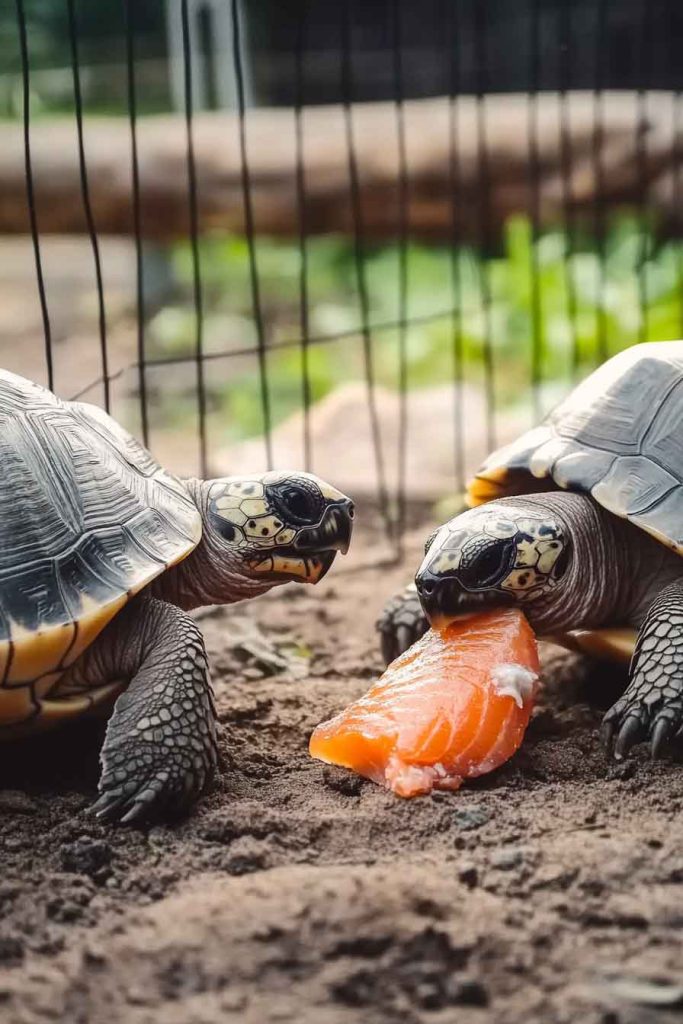
Omega-3 Fatty Acids
The omega-3 fatty acids in salmon support brain function, reduce inflammation, and promote healthy shell and skin development. These essential fats are sometimes lacking in commercial turtle foods.
Vitamin D Content
Salmon naturally contains vitamin D, which helps turtles absorb calcium more effectively. This is especially beneficial for indoor turtles that don’t get regular UVB exposure.
B Vitamins
The B-complex vitamins in salmon support metabolism, nervous system function, and overall energy levels in turtles.
Health Risks of Feeding Salmon to Turtles
Despite the benefits, there are several risks I need to be aware of when feeding salmon to my turtle:
Calcium-Phosphorus Imbalance
The biggest concern with salmon is its poor calcium-to-phosphorus ratio. Regular feeding of high-phosphorus foods like salmon can lead to calcium deficiency and metabolic bone disease in turtles. This can result in soft shells, deformed growth, and serious health complications.
High Fat Content
Salmon is relatively high in fat, which can lead to obesity and liver problems if fed too frequently. Overweight turtles are more prone to various health issues and have shortened lifespans.
Contamination Risks
Raw salmon can carry parasites, bacteria, and other pathogens that can make turtles sick. Even farm-raised salmon may contain contaminants like PCBs and heavy metals that can accumulate in a turtle’s body over time.
Sodium Content
While not extremely high, the sodium content in salmon can be problematic for turtles if they consume it regularly, potentially affecting their kidney function.
How to Safely Prepare Salmon for Turtles
If I decide to give my turtle salmon, proper preparation is crucial:
Cooking Method
I always cook salmon thoroughly before offering it to my turtle. Baking, boiling, or steaming are the best methods. I never use oil, butter, seasonings, or any additives that could be harmful to turtles.
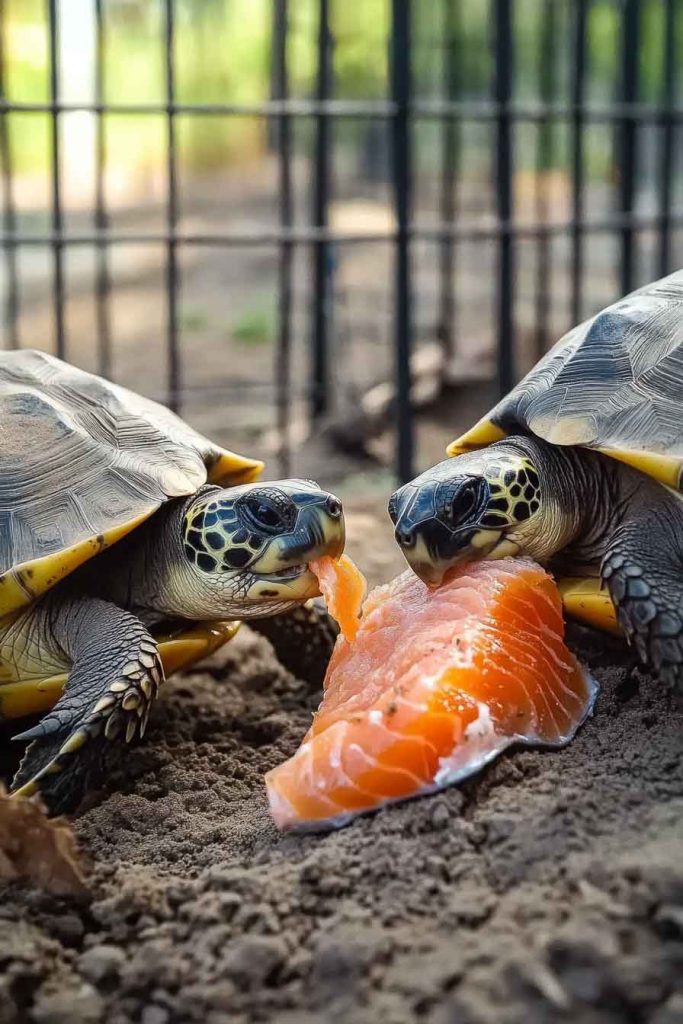
Portion Size
I cut the salmon into small, bite-sized pieces appropriate for my turtle’s size. Large chunks can be choking hazards or difficult to digest.
Remove Bones
Even though salmon doesn’t have many large bones, I carefully check for and remove any bones that could pose a choking hazard or cause internal injury.
Freshness
I only use fresh, high-quality salmon. If I wouldn’t eat it myself, I don’t give it to my turtle.
How Much Salmon Should Turtles Eat?
Moderation is absolutely key when it comes to feeding salmon to turtles. I follow these guidelines:
- Frequency: No more than once per week, and preferably less often
- Portion size: A piece no larger than the space between my turtle’s eyes
- Age considerations: Adult turtles only – I never give salmon to baby turtles
- Species considerations: Only for omnivorous species
I always remember that salmon should be considered a treat, not a staple food. The majority of my turtle’s diet should still consist of appropriate commercial turtle food and approved vegetables.
Can You Feed Salmon to Baby Turtles?
I strongly advise against feeding salmon to baby turtles. Young turtles have different nutritional needs and more sensitive digestive systems. Their diet should consist primarily of high-quality commercial turtle food designed for juveniles, with occasional approved vegetables as they grow.
Baby turtles are also more susceptible to nutritional imbalances, and the poor calcium-phosphorus ratio in salmon could seriously affect their developing shells and bones.
Alternative Fish Options for Turtles
If I want to provide fish protein for my turtle, there are better options than salmon:
- Feeder fish: Goldfish or minnows (though these should also be limited)
- Cooked white fish: Like tilapia or cod, which have better nutritional profiles
- Commercial fish-based turtle foods: These are formulated to provide proper nutrition
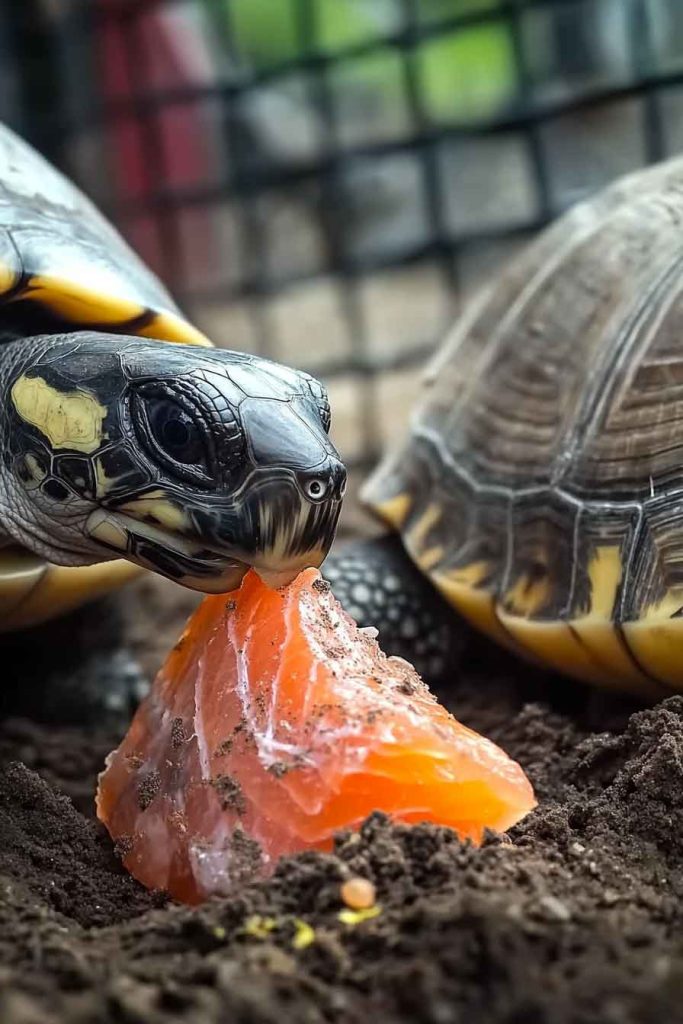
Species-Specific Considerations
Different turtle species have different dietary needs:
Box Turtles
Box turtles are omnivores and can occasionally have small pieces of cooked salmon. However, they should primarily eat a varied diet of insects, vegetables, and fruits.
Red-Eared Slider Turtles
Red-eared sliders are omnivorous and might enjoy salmon as an occasional treat. However, their diet should be primarily commercial turtle pellets with appropriate vegetables.
Painted Turtles
Painted turtles are omnivorous and can have salmon occasionally, but like other species, it should be a rare treat rather than a regular food.
Hermann’s Tortoises
These are primarily herbivorous and should not be given salmon at all. Their diet should consist of grasses, weeds, and vegetables.
Signs to Watch For After Feeding Salmon
Whenever I introduce a new food like salmon to my turtle’s diet, I watch carefully for any adverse reactions:
- Digestive upset: Diarrhea, vomiting, or loss of appetite
- Lethargy: Unusual tiredness or lack of activity
- Shell problems: Soft spots or unusual growth patterns (long-term effect)
- Behavioral changes: Aggression, hiding, or refusal to eat regular food
If I notice any of these signs, I immediately stop feeding salmon and consult with a reptile veterinarian.
Frequently Asked Questions (FAQs)
Can turtles eat smoked salmon?
No, I never give my turtle smoked salmon. The smoking process adds salt and other preservatives that are harmful to turtles. The high sodium content can cause serious health problems.
Is canned salmon okay for turtles?
I avoid canned salmon because it often contains added salt and preservatives. If I must use canned salmon, I choose the variety packed in water with no added salt, and I rinse it thoroughly before serving.
Can turtles eat salmon skin?
While salmon skin isn’t toxic, it’s high in fat and can be difficult to digest. I always remove the skin before offering salmon to my turtle.
How often can I give my turtle salmon?
I limit salmon to no more than once per week, and preferably less often. It should always be considered a special treat, not a regular part of the diet.
Can wild turtles eat salmon?
In nature, some turtle species do catch and eat fish, including salmon in certain regions. However, wild turtles have access to a much more varied diet that helps balance the nutritional ratios.
Conclusion
While turtles can eat salmon, it requires careful consideration and proper preparation. As a responsible turtle owner, I’ve learned that salmon can be an occasional treat for omnivorous turtle species when cooked properly and given in small amounts. However, the risks associated with the poor calcium-phosphorus ratio and high fat content mean that it should never become a regular part of my turtle’s diet.
The key is moderation and balance. I always prioritize high-quality commercial turtle food as the foundation of my turtle’s diet, with salmon serving as an infrequent treat. If you’re unsure about your turtle’s dietary needs or have concerns about introducing new foods, I recommend consulting with a veterinarian who specializes in reptiles.
Remember, every turtle is different, and what works for one might not work for another. By staying informed and observant, we can provide our shelled friends with the best possible care and nutrition they deserve.

